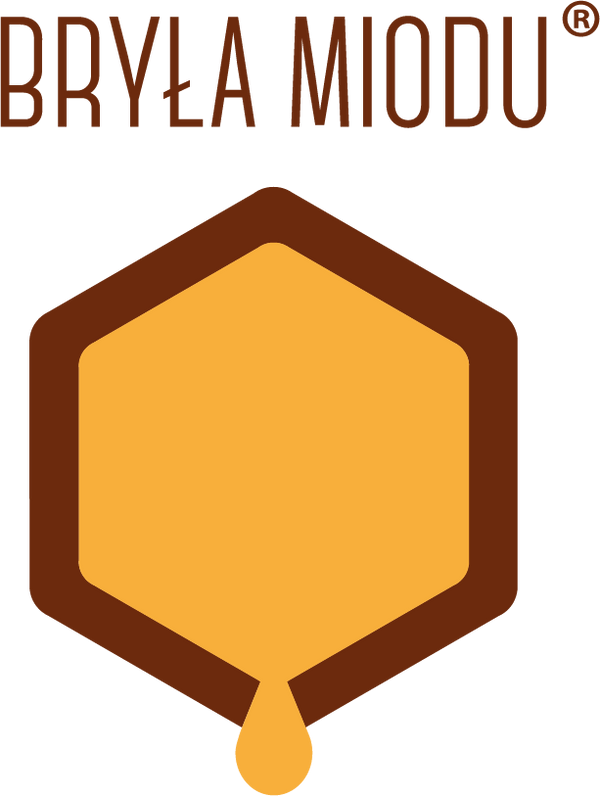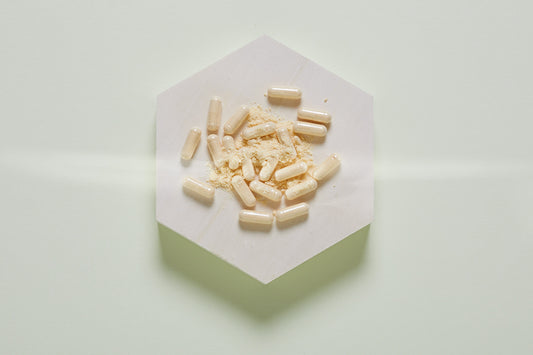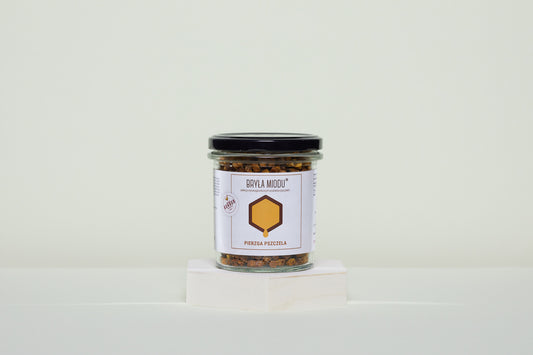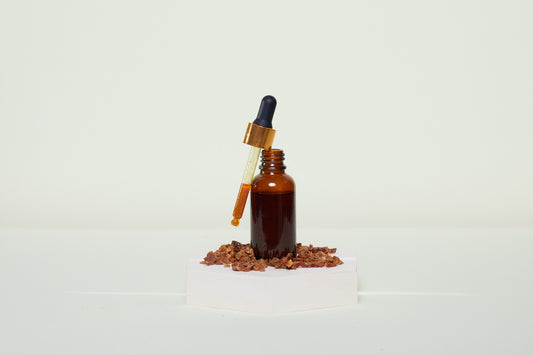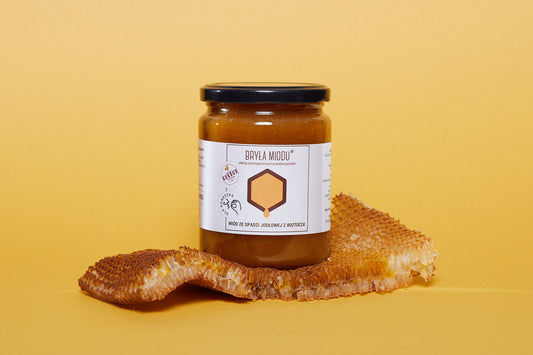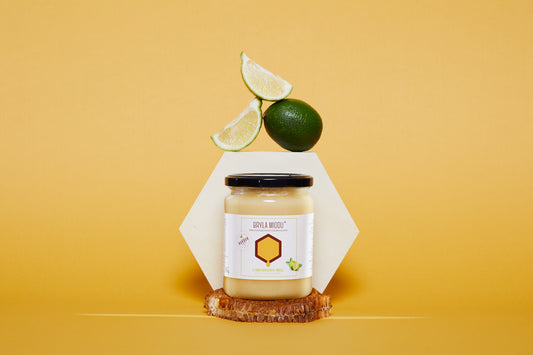Propolis ointment is a medicinal and cosmetic product that contains propolis as the main active ingredient. It is a natural substance produced by bees that has antibacterial, anti-inflammatory, antiviral and antifungal properties. Propolis ointment is therefore a health product that alleviates various skin ailments. Due to its moisturizing and protective properties, it is also used in cosmetics.
In the article, we described the composition and properties of propolis ointment, how to use it, and also provided a recipe for making it yourself.
Composition of propolis ointment
The composition of propolis ointment may vary depending on the source of propolis, but research shows that its typical ingredients are substances known for their many beneficial health properties. Here are the most important ones:
- resins - constitute about 50% of the composition of propolis. These are substances collected by bees from the buds of trees, mainly coniferous ones. Resins provide propolis with its viscosity and stickiness and contain many antioxidants,
- beeswax - another important ingredient of propolis, although present in smaller quantities than resins. It has a consolidating function and helps maintain the consistency of propolis,
- essential oils - give propolis its characteristic smell and taste. They have antibacterial and antiviral properties,
- flavonoids - chemical compounds with antibacterial, anti-inflammatory and antioxidant properties. Key biologically active substances in propolis,
- phenols - chemical compounds that have antioxidant and antibacterial properties. They help fight infections,
- organic acids - including caffeic, ferulic and cinnamic acid, which also have antibacterial and anti-inflammatory properties,
- microelements - iron, zinc, copper and magnesium, influence the health properties of propolis,
- vitamins - propolis contains small amounts of vitamins B1, B2, B6 and C. Top of the form
Properties of propolis ointment
Propolis ointment is valued for its health-promoting effects, which have been confirmed by numerous scientific studies. The following properties are widely used in medical practice:
- Antibacterial properties. Substances contained in propolis, such as flavonoids and phenolic acids, are effective in fighting many types of bacteria, including those resistant to antibiotics. Studies conducted on propolis samples from various sources have demonstrated the ability to inhibit bacterial growth, which makes propolis ointment an effective treatment for skin infections .
- Anti-inflammatory properties. Propolis, which is the main ingredient of the ointment, also has anti-inflammatory properties that can help alleviate skin diseases. Flavonoids present in propolis have the ability to inhibit inflammatory reactions at the cellular level, which brings relief to people suffering from various types of skin problems, including acne and eczema .
- Accelerating healing. Thanks to the ointment, you can speed up the healing process of wounds and skin damage . It has a positive effect on the production of collagen, which is necessary for tissue regeneration. The skin heals faster and scars may be less visible.
- Antiviral effect. Scientific research confirms that propolis effectively prevents the spread of viruses, including the herpes virus (HSV-1) . Therefore, the ointment is used as an aid in the treatment of viral skin infections.
- Treatment of pressure sores. Propolis ointment has been used successfully to treat pressure ulcers in people who spend a long time lying down or sitting. Its antibacterial and healing properties contribute to reducing pain and improving the condition of the skin in areas affected by pressure sores.
- Fighting acne . Propolis may also inhibit the growth of acne-related bacteria. Propolis ointment is therefore used to combat this skin disease.
Propolis ointment - method of use and contraindications
Proper use of propolis ointment is crucial to ensure its effectiveness and patient safety. There are also some contraindications that are worth considering.
Propolis ointment for skin diseases
Before applying propolis ointment, always thoroughly clean the skin around the area to be treated. Warm water and mild soap work best for this purpose. After washing, gently dry the skin.
Now a thin layer of propolis ointment is applied to the area that requires treatment. You should not use too much ointment, as it may lead to excessive clogging of the skin pores. After applying, rub the ointment gently in circular motions and wait until it is absorbed into the skin.
Depending on the type of problem, propolis ointment should be used often enough, even several times a day, until improvement is achieved.
Contraindications and precautions
- People who are allergic to bee products, such as honey or pollen, may be more susceptible to allergic reactions. Before using propolis ointment for the first time , perform an allergy test by applying a small amount to a small area of the skin. If allergy symptoms such as redness, itching or swelling appear within a few hours, you should stop using the product and consult a doctor.
- Propolis ointment cannot be used around the eyes or on mucous membranes . If it gets into these places, wash them immediately with plenty of water.
- Propolis ointment is a remedy for minor cuts and scrapes, but should not be applied to deep or seriously infected wounds . In such cases, you will need the help of a doctor.
It is a natural remedy with many health benefits. Nevertheless, the ointment should be used in moderation and taking into account possible allergic reactions.
How to make propolis ointment yourself?
The process of preparing propolis ointment, which can be used for medicinal and cosmetic purposes, is not difficult to carry out. Before starting work, prepare the following ingredients:
- Propolis extract , which we can easily prepare ourselves. We describe how to do this below.
- The carrier is necessary to dissolve propolis. Vegetable oil is best for this purpose, e.g. olive oil, coconut oil, jojoba oil or shea butter.
- Optional ingredients . If we want to enrich the ointment with additional properties, we can add essential oils, such as lavender oil, rosemary oil or others that meet our needs.
In order to obtain the best effect, we recommend sticking to the following sequence of actions:
1. Preparation of propolis extract
Two weeks before starting work, we should purchase pure propolis and grind it, preferably into powder . After cooling the lump of bee glue, we break it into pieces with a knife and then grind it in a coffee grinder. The next step is to place the obtained powder in a jar and pour high-proof rectified spirit. Place the jar with the mixture in a dark and cool place and shake the contents daily. After two weeks , strain the extract through cheesecloth and pour it into a dark glass bottle.
2. Combining the extract with oil
Heat the oil that will be the carrier of the ointment to 50 0 C and add propolis extract. Mix the ingredients until the alcohol in the extract evaporates. We should not worry if some of it remains, as the presence of a small amount of alcohol will not affect the effectiveness of the ointment in any way.
3. Final steps
After the mixture cools down, add a few drops of the prepared aromatic oils and pour the prepared propolis ointment into a dark glass jar . We store it in a cool place , away from light, to preserve its durability as long as possible.
Propolis ointment with honey and additives
- Ointment ingredients:
| petrolatum: | 100 g |
| lanolin: | 100 g |
| pure propolis: | 25 g |
| bee honey: | 15 g |
| alcohol extract of propolis: | 10 g |
| larch turpentine: | 10 g |
| mountain pine oil: | 0.2 g |
2. Schedule of activities:
- Heat the Vaseline, lanolin and larch turpentine to a temperature of approximately 60°C.
- Mix everything well and cool to 45°C.
- Now add ground propolis to the liquid and mix until the ingredients are combined.
- We lower the temperature to about 35°C. Pour mountain pine oil and propolis extract.
- When the ointment begins to thicken, add honey.
- Pour the semi-liquid ointment into jars and place them in a dark, cool place.
Note : If honey is combined with a mixture that is too warm, it will lose many valuable ingredients and sink to the bottom.
Propolis ointment, and above all propolis itself, have been tested in numerous laboratories for years. Scientists have found that it may be effective in treating various skin problems . However, before using the ointment, you should consult your doctor to make sure that it is the right solution for your case. It is also worth remembering that propolis ointment can be used as a supplement to traditional treatment , but does not completely replace it.
